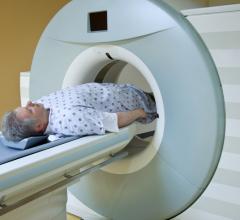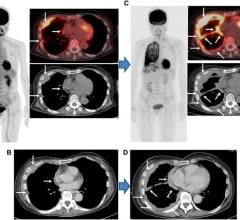News | December 31, 2013
Compared with other New England states, health status, preventive care improved in Massachusetts after reform
December 31, 2013 — Massachusetts was on the same brink in 2006 that the entire nation is on today: the brink of expanding health insurance to cover far more people than before through government-driven, market-based reform.
A new study shows the health of residents in that one state improved measurably, especially among the poor and near-poor, in just the first five years — compared with the health of residents in neighboring states. So did the use of some preventive care, specifically two tests designed to spot colon and cervical cancers early, and cholesterol tests to gauge heart disease risk.
Meanwhile, over those same five years, Massachusetts residents were increasingly likely to say they had health insurance and access to a personal doctor, and less likely to say that costs stood in the way of getting care, than other New Englanders. The changes occurred at similar rates for black, white and Hispanic residents.
Writing in the new issue of The Milbank Quarterly, the study’s authors note that they can’t be certain that all the population-wide differences between Massachusetts and its neighbors came directly from the expansion of insurance coverage. Other reforms likely had an impact, too. But their detailed statistical analysis, supported by the Commonwealth Fund, points firmly to a positive impact, especially among residents with the lowest incomes.
“Everyone has been looking over the past few years at Massachusetts, which was the first state to show the rest of the U.S. that near-universal coverage could be achieved,” said Philip Van der Wees, Ph.D., researcher at Harvard University when the study was conducted, and first author. “We found that people have gained in general, mental and physical health, and that some preventive measures improved. We would hope that this would be a blueprint for the rest of the U.S., though Massachusetts is not the average state, because it began from a higher level of insurance."
Van der Wees worked on the study with John Ayanian, M.D., MPP, director, University of Michigan Institute for Healthcare Policy and Innovation, formerly of Harvard Medical School. With Harvard health care statistics expert Alan Zaslavsky, Ph.D, Van der Wees at the time was a Commonwealth Fund Dutch Harkness Fellow in Health Care Policy and Practice. He is now at Radboud University Nijmegen Medical Center, Netherlands.
“Our results demonstrate the potential benefits of healthcare reform in Massachusetts that may also be achieved through the implementation of the federal Affordable Care Act,” said Ayanian.
“And, just as with the ACA, the impact of broader health insurance coverage in Massachusetts is intertwined with the effects of numerous efforts in the public and private sector to improve healthcare quality and contain costs,” he added.
Statewide Surveys Reveal Changes
The data for the study came from annual random telephone surveys during 2001 through 2011 that asked 345,211 New Englanders questions about their general, physical and mental health, and their use of and access to healthcare services including cholesterol testing and screening for cancers of the breast, colon and cervix. State health departments, in conjunction with the federal Centers for Disease Control and Prevention, gathered the data.
The researchers used advanced statistical approaches to study the data collected between 2001 and 2011 as part of the CDC’s Behavioral Risk Factor Surveillance System. This allowed them to detect subtle differences in health status and behaviors and to analyze these differences further by income and race/ethnicity.
While the research didn’t show huge jumps in any particular area of health, care or access, the overall pattern is consistent with a positive impact from increased health insurance and other reforms, compared with states that didn’t embark on major reform efforts. Even when the researchers excluded data from Vermont and Maine, which launched smaller-scale reform efforts, Massachusetts showed greater improvements.
The authors note that the “rising tide” effect in Massachusetts compared with other states was greater among those whose incomes were within 300 percent of the federal poverty level. These poor and near-poor residents had a faster rise in measures related to healthcare access and health status. The rate of changes in health status, access and care were similar among white, black and hispanic residents, which means that deeply entrenched disparities in health likely persisted.
By studying access to care and health outcomes for five years after health reform took effect in Massachusetts, the authors also were able to distinguish how access to care and health outcomes changed over time. Whereas improvements in insurance coverage and reduced cost barriers to care were seen within one year after health reform, access to personal doctors improved after two years and gains in health status became evident after four years.
These statewide findings counter prior anecdotal perceptions that access to primary care worsened in Massachusetts after more residents gained insurance coverage.
Howard Markel, M.D., Ph.D., professor, U-M Medical School, and editor, Milbank Quarterly, called the study an important contribution to understanding of the potential implications of the federal Affordable Care Act.
“In an era of demagoguery and exaggeration posing as ‘facts,’ it is essential to collect and analyze solid evidence on our nation's healthcare policies,” said Markel. “Indeed, it is the only way I know to approach the Sisyphean task of reforming and improving healthcare access for all Americans. Publishing and disseminating articles like this one is a solid start in that direction.”
At the time of the study, Ayanian was at the Harvard Medical School and School of Public Health, as well as the Brigham and Women’s Hospital. Now as director of U-M’s IHPI, he leads a group of more than 400 researchers, many of them focused on evaluating the impact of the Affordable Care Act and other changes in healthcare policy and practice.
For more information: www.milbank.org
© Copyright Wainscot Media. All Rights Reserved.
Subscribe Now


 August 09, 2024
August 09, 2024 








